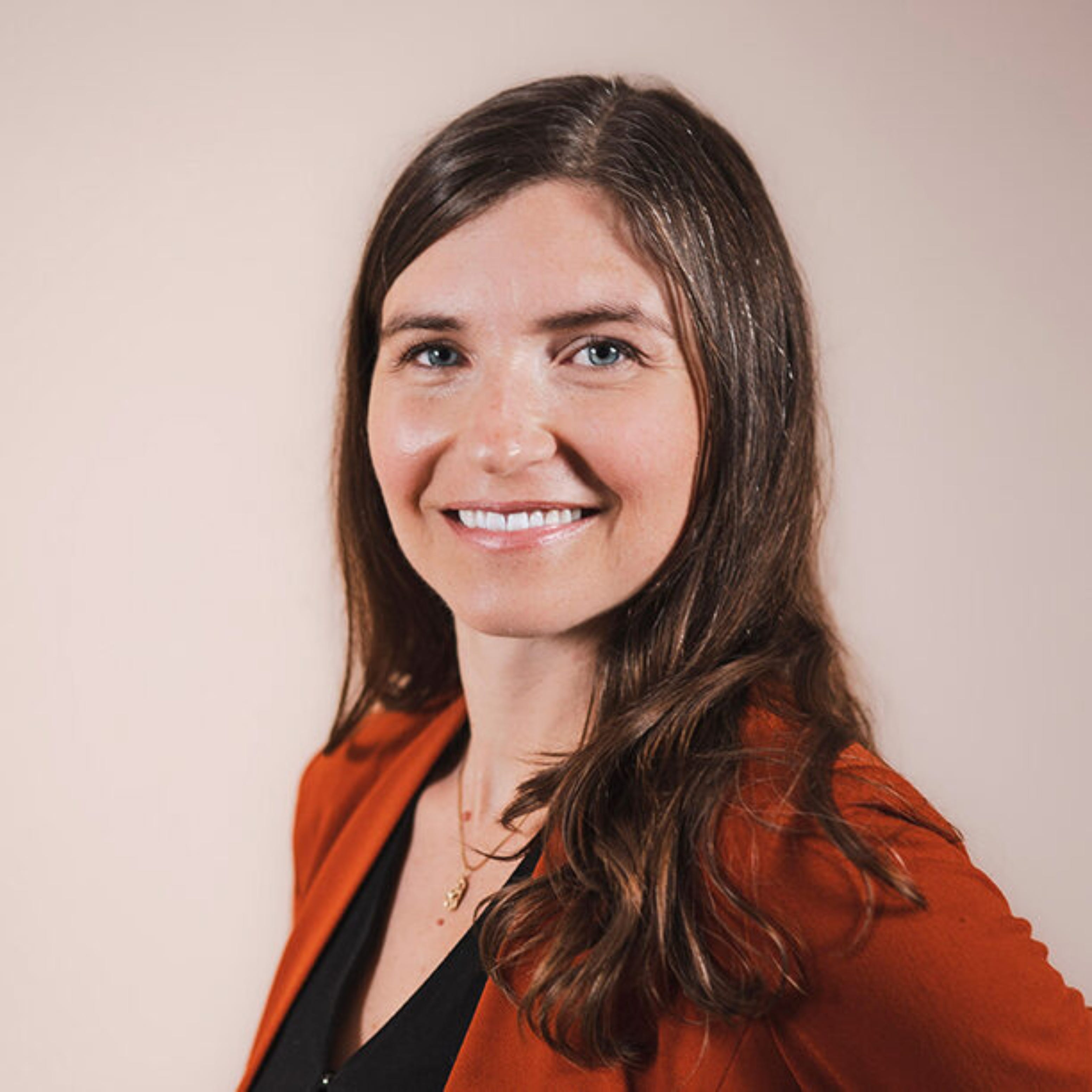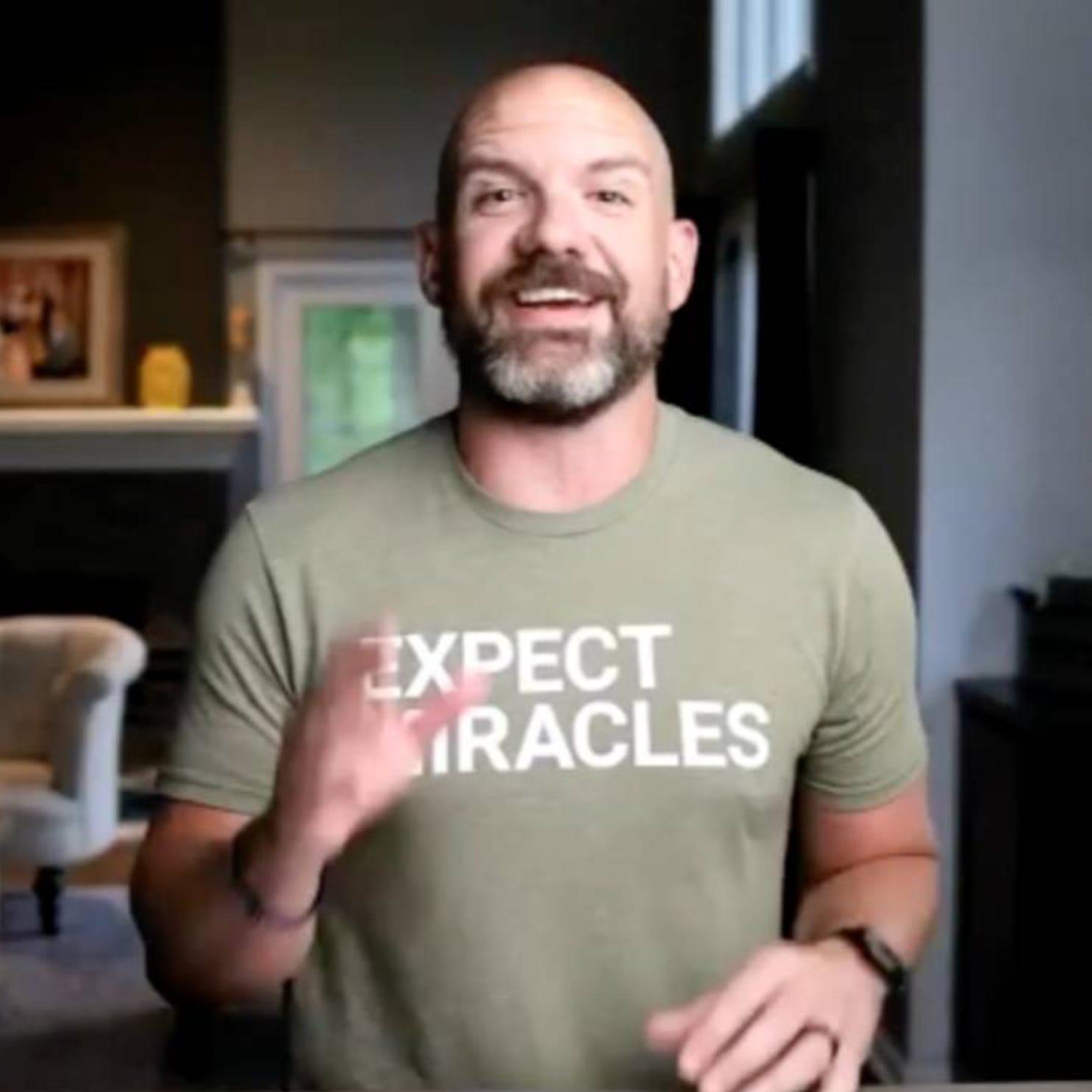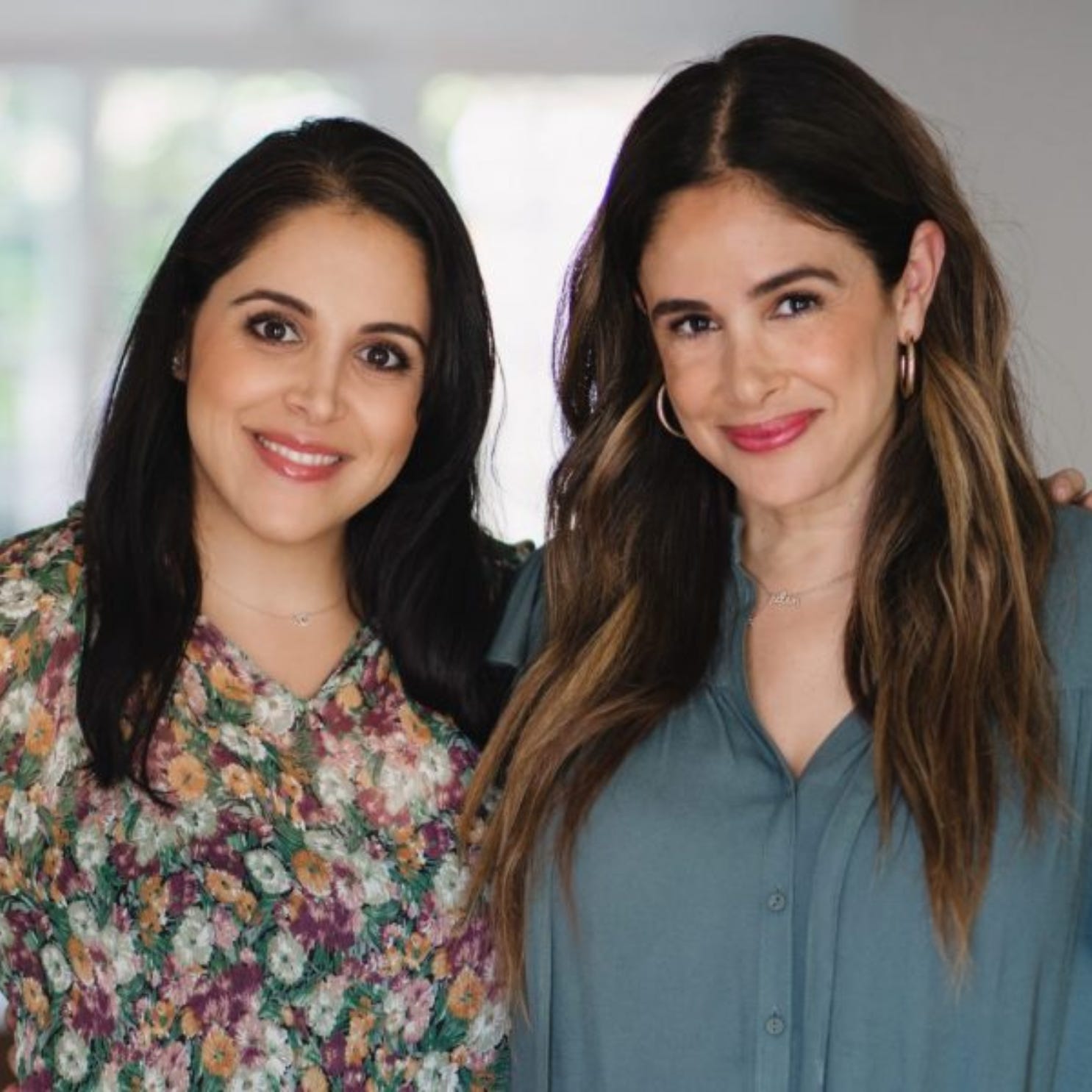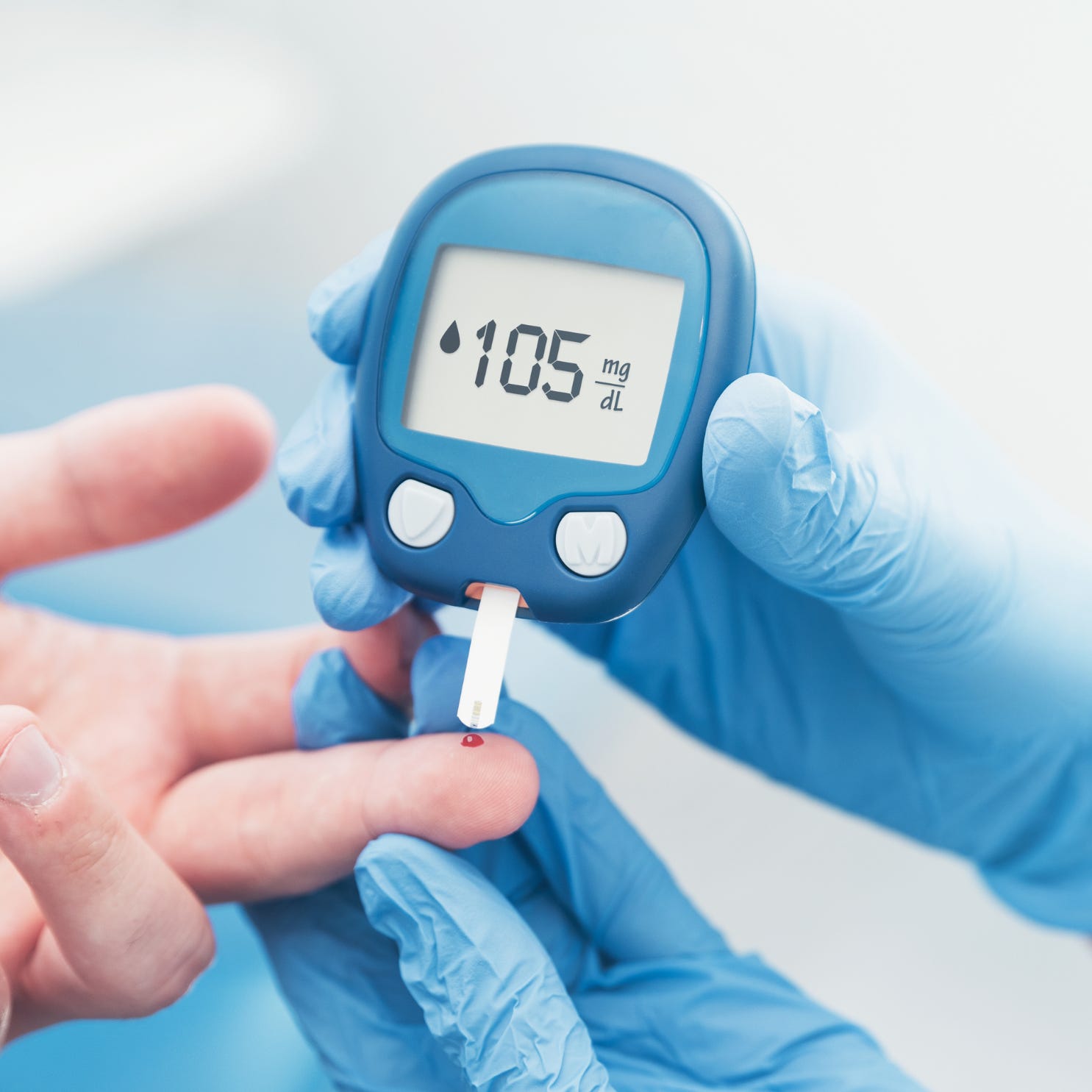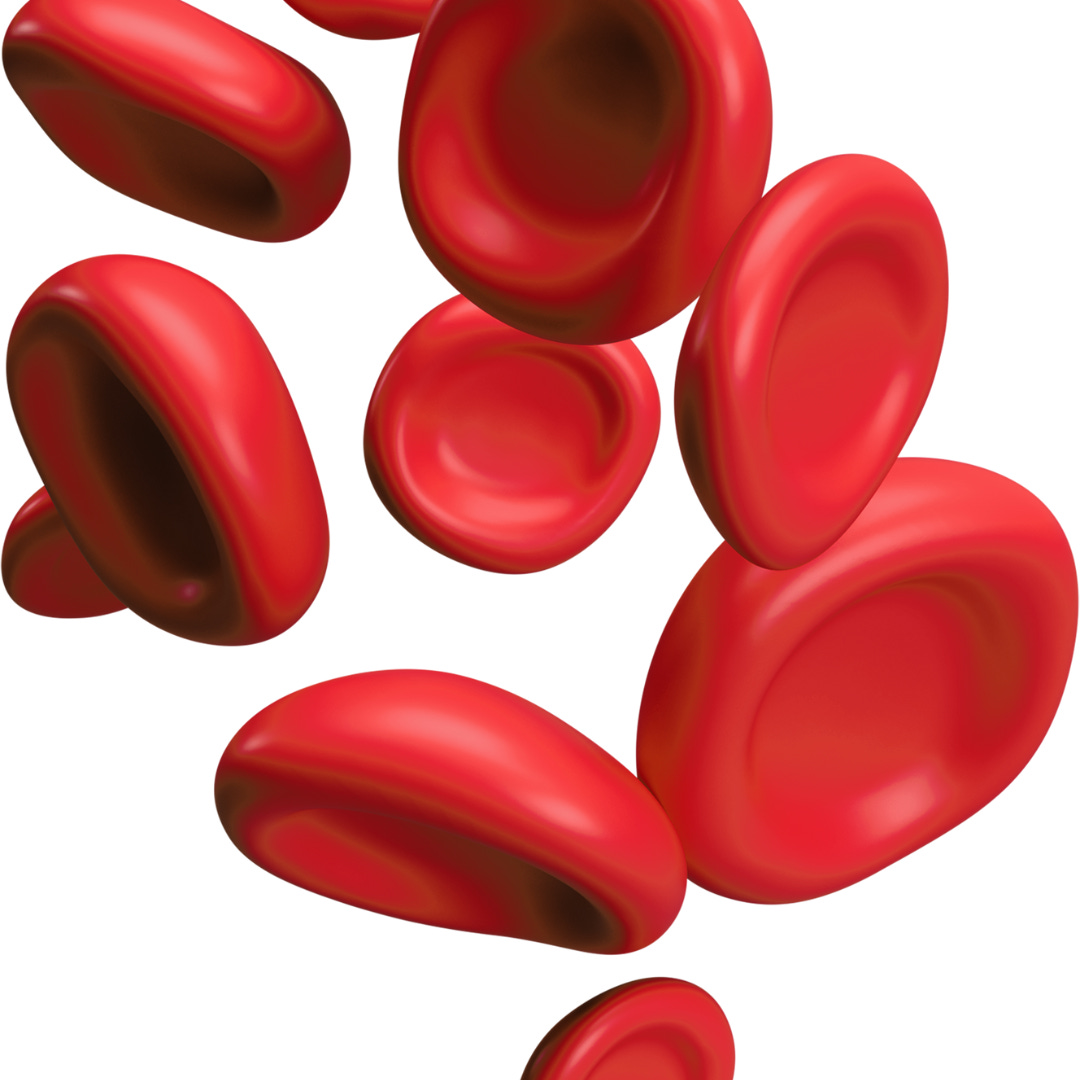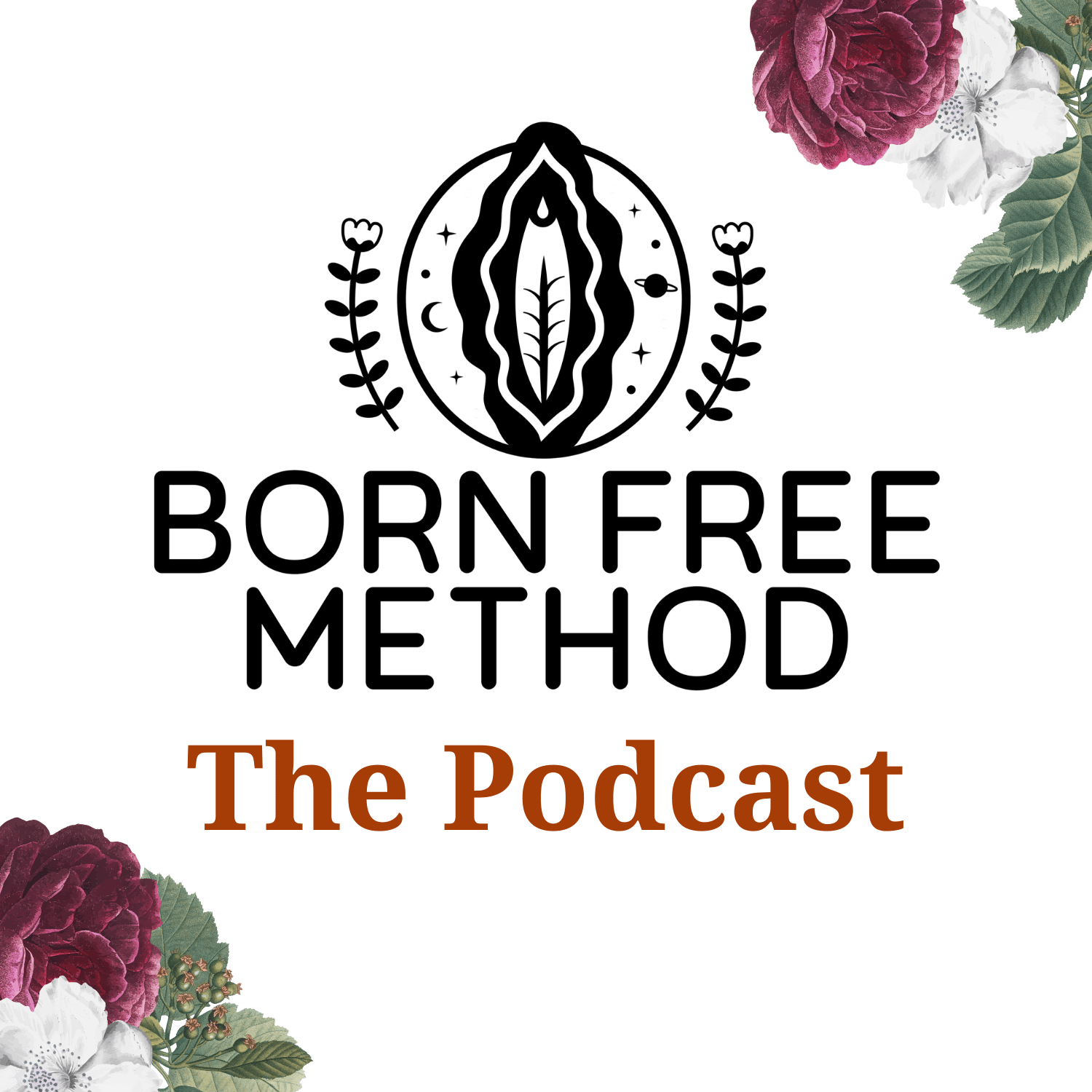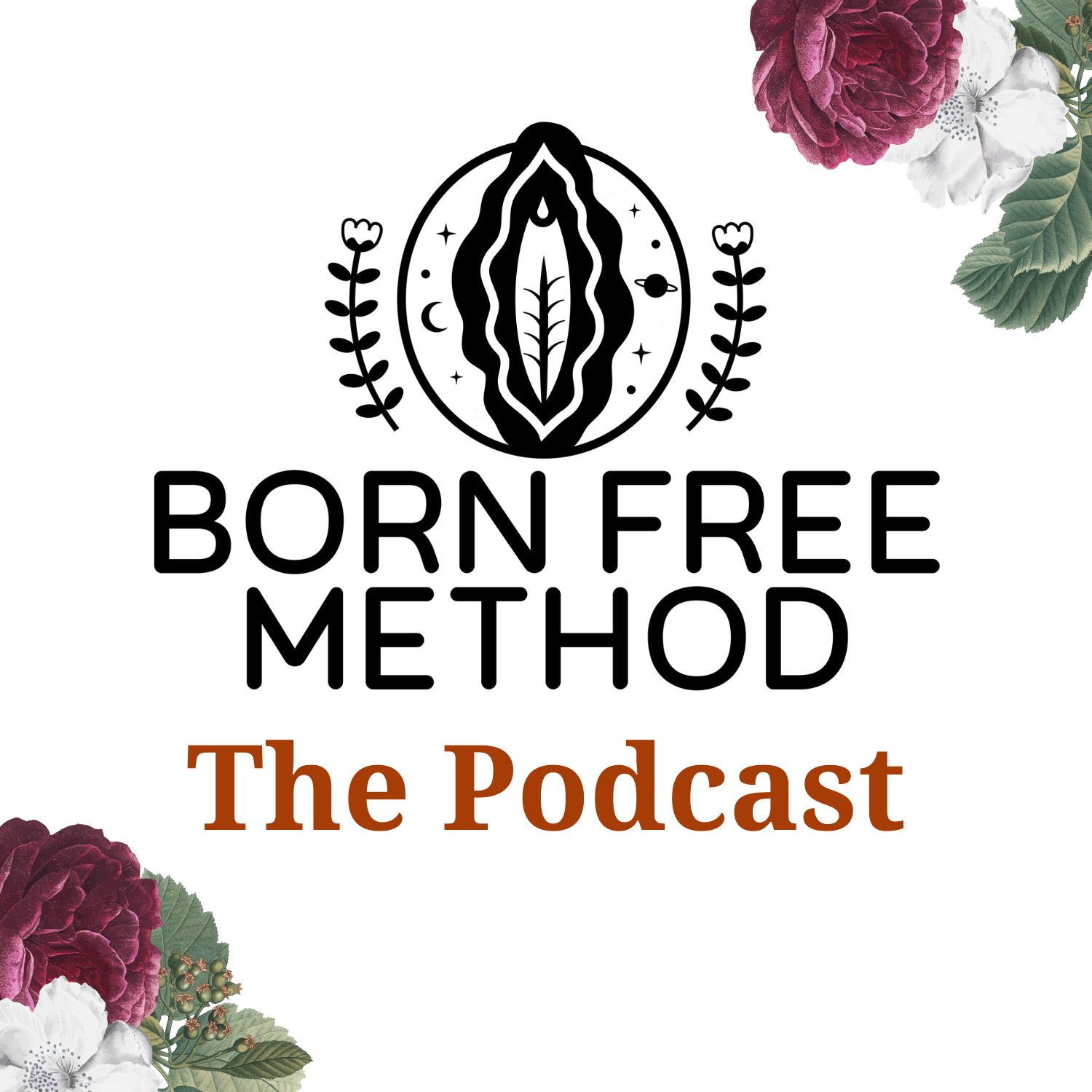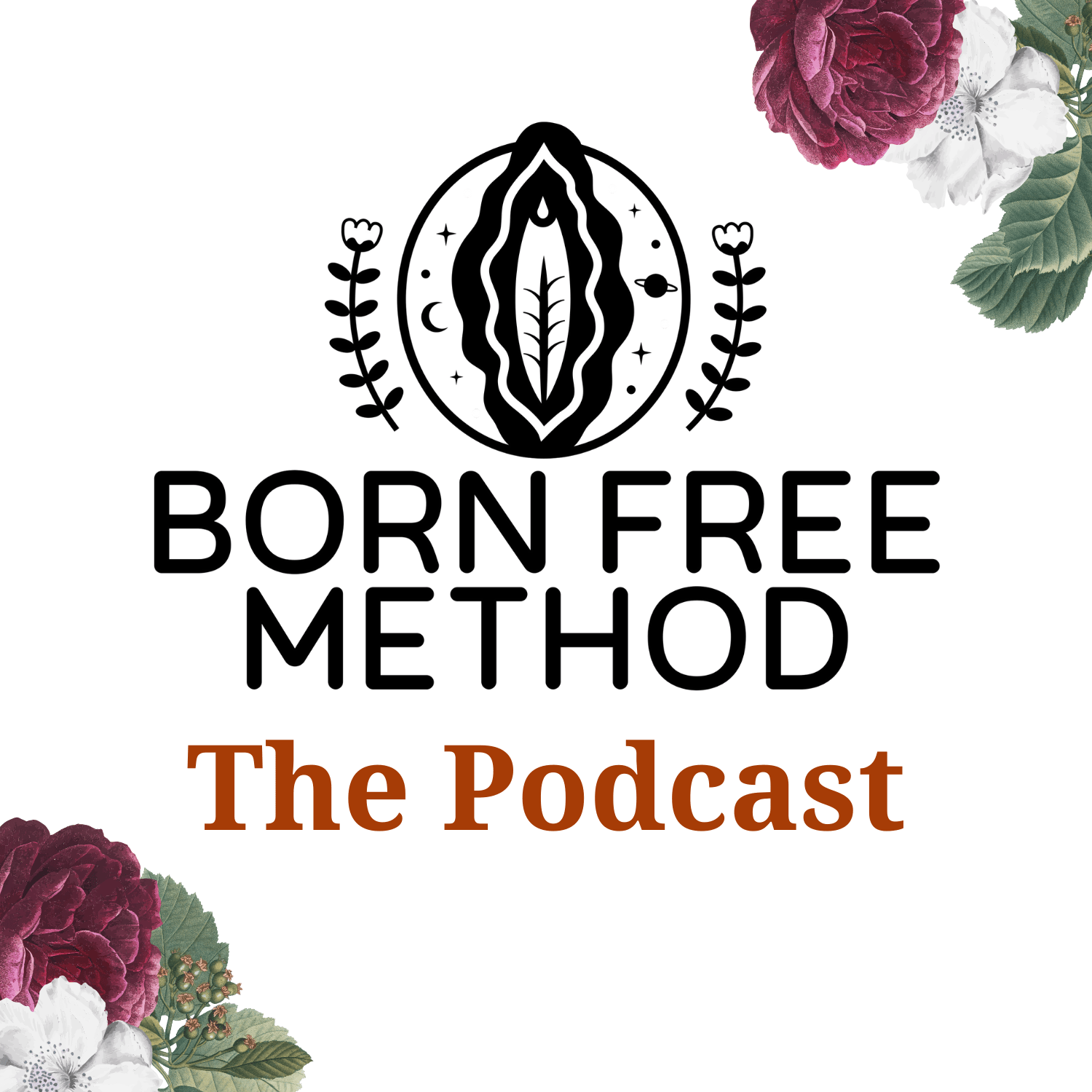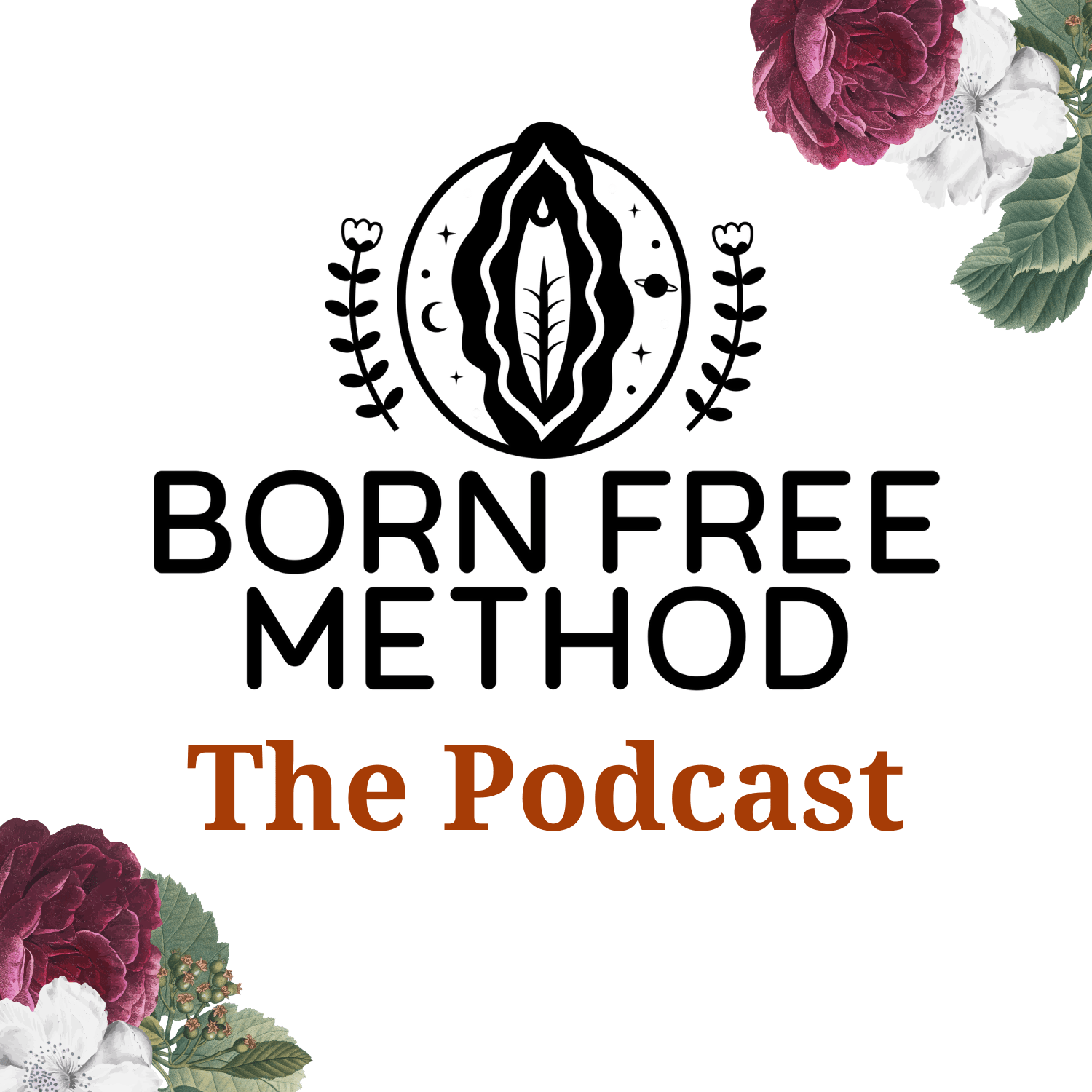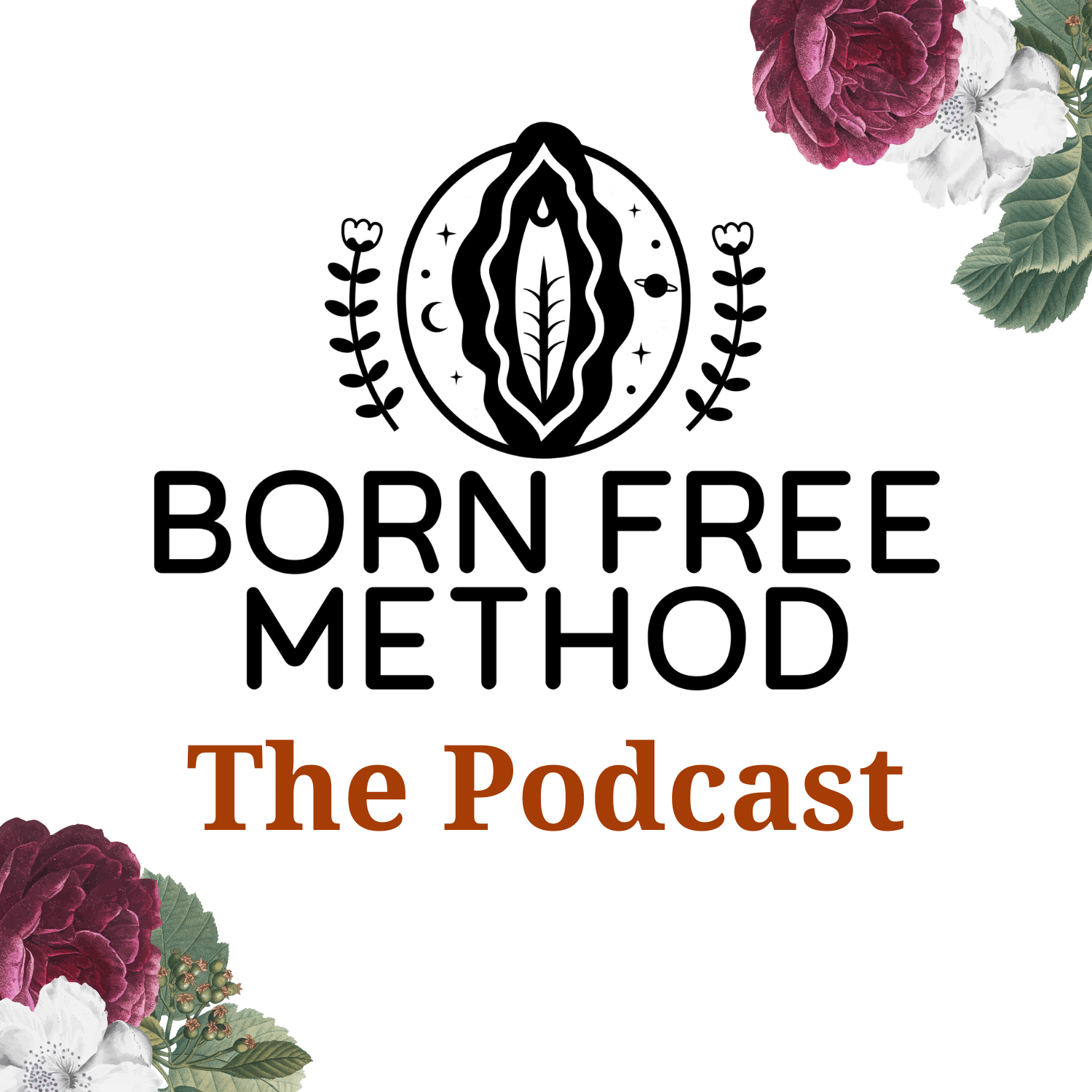Discover Born Free Method: The Podcast
Born Free Method: The Podcast

Born Free Method: The Podcast
Author: Nathan Riley
Subscribed: 1Played: 2Subscribe
Share
© Nathan Riley, MD, FACOG
Description
The institutions and individuals who run the world would like you to believe that you are powerless. That there's nothing you can do to improve the wellbeing of your family. That you aren't smart enough to understand shmancy science stuff. That eating and living well is too hard for most...so why try? That exercising your rights to informed consent and refusal is irresponsible. That having a birth on you terms, in your own home would be incorrigible. That pregnancy is a disease and childbirth is a medical procedure. That your symptoms are "all in your head". That cervical cancer is an inevitable consequence of HPV infection.
They're wrong. Welcome to your revolution.
nathanrileyobgyn.substack.com
They're wrong. Welcome to your revolution.
nathanrileyobgyn.substack.com
195 Episodes
Reverse
I’ve been interpreting DUTCH tests for a few years, and it seems that the rabbit hole gets deeper and deeper. If you work with women as a practitioner, you need at least be aware of DUTCH. Using urine metabolites (DUTCH Complete and Cycle Mapping) or salivary metabolites (DUTCH Cortisol Awakening Response), I am able to get a bird’s eye view of how the adrenals, ovaries, and liver are working in sync to support the overall wellbeing of my female clients from the standpoint of hormone production and detoxification. No test is perfect, but a multiple-day collection is nearly always superior to lab draws in my functional medicine practice. Kelly Ruef, ND, is one of the clinicians on-staff at DUTCH, and she helps people like me interpret client results. On a recent call, I invited her to come share some insights about DUTCH with you, and this is the conversation that ensued! Enjoy!Here are some sample reports for DUTCH Complete, DUTCH Cycle Mapping, and DUTCH Cortisol Awakening Response in case you want a visual aid as you listen to this conversation!Notes for this episode are found on SubstackWork with Nathan: Beloved Holistics | Born Free Method | Clear & Free | Twins-Breech TrainingMedical Disclaimer: Born Free Method: The Podcast is an educational program. No information conveyed through this podcast should be construed as medical advice. These conversations are available to the public for educational and entertainment purposes only.Music provided by AudioKraken / Pond5 Get full access to Born Free Method: The Podcast at nathanrileyobgyn.substack.com/subscribe
I invited Tony Ebel, DC, interactive chiropractor and founder of PXDocs, to come speak to my Born Free Method community members because he’s brilliant. But he’s not just brilliant, he’s also awesome. Tony is the sort of guy with whom I could enjoy a bourbon and talk about my vulnerabilities as a father, the cult of medicine, and difficulties in my relationship. He’s a regular guy…But from this regular guy, I’ve gained some incredible insights about what he calls the “perfect storm”. When I say insights, I mean validation. We met through an Instagram post that I posted a year or so ago in which I presented the story of a woman who had a child with autism spectrum disorder, and she was asking me if thought that perhaps a hypoxic injury in her birth could have caused the autism. While I don’t believe that a hypoxic injury alone could be responsible (and proving that would be impossible), I did consider the influences of the myriad of other stressors put on little babies and whether these stressors, in combination, might overwhelm an already fragile nervous system within a baby that experienced relative hypoxia during childbirth. Tony jumped on that post, and we’ve been friends every since. I soon found myself on one of his live webinars where he discusses how the combination of environmental toxins, poor co-regulation with the parents (e.g. long NICU stay), subluxation during birth, or the myriad of issues related to cesarean birth might impact a child’s lifelong health. And even better: what to do about it. You might be thinking, “What business does a chiropractor have in speaking about birth?”Well, like other chiropractors who have come on the podcast such as Elliot Berlin, Lindsey Cantu, and Kaleb Valdez, these practitioners often have to fix the problems that we generate through our overly-interventive approach to childbirth in the conventional model. They are sounding an alarm…and we have been slow to respond.There was a recent post on another OBGYN’s Instagram page meant as an eye-roll in response to another chiropractor’s suggestion that perhaps cesarean birth might impact how the sutures of the fetal skull and its orientation around the vertebral spine through the atlas and cervical spine might impact a child’s health. I commented with the suggestion that perhaps we should listen to what he has to say rather than discount is completely carte blanche because he isn’t an OBGYN. I got trashed.But I ask Tony about this hypothesis in this interview, and he unpacks it beautifully. Perhaps there is a reason that baby’s do better - on average - when born vaginally versus abdominally?What do we have to lose through consideration of the myriad of issues that c-section might cause, especially given that we can all agree that 37% of babies being born in our country by c-section is problematic?In this conversation with Dr. Ebel, we also discuss the ideal timing and frequency of newborn chiropractic care (spoiler: immediately), issues with vertebral joint subluxation, the neuroendocrine-immune (NEI) system, PANDA/PANS, and laying a healthy foundation for our kiddos through proper nutrition and life modification.Disclaimer: This episode is not meant to demonize c-sections or OBGYNs. It’s a call to action to reserve the operating room for only the necessary cesareans…and most of the c-sections women are undergoing aren’t necessary. And often they were provoked by a laundry list of interventions, perhaps also unnecessary in most cases.If you had a c-section - or end up having a c-section - Tony has some advice for you, too! This interview was conducted in front a live audience with Born Free Method Community members, so there’s also a lively Q&A throughout the conversation. Our community gets back-stage access to all of these interviews. Consider joining us so that you don’t miss out!Find Dr. Ebel and his cadre of awesome practitioners at PXDocs.com. Check out his amazing podcast “ExperienceMiracles™”, on which I was a recent guest. And you can learn more about him on Instagram.I just launched a special program that starts in 7 weeks, which is directly related to nervous system regulation. Your body is an instrument, and the sounds that it creates can have a host of influences on your physiology, which is ever-the-more-important in childbirth. This 40-day 1st chakra chanting program start in January, and it’s a courageous collaboration with Maryn Azoff, of Vocal Transformation. Learn more about this program HERE. We are limiting the spots to 100 people (a couple counts as one). When you are ready to enroll, go HERE.Notes for this episode are found on SubstackWork with Nathan:Beloved Holistics | Born Free Method | Clear & Free | Twins-Breech TrainingMedical Disclaimer: Born Free Method: The Podcast is an educational program. No information conveyed through this podcast should be construed as medical advice. These conversations are available to the public for educational and entertainment purposes only.Music provided by AudioKraken / Pond5Born Free Method: The Podcast is a reader-supported publication. To receive new posts and support my work, consider becoming a free or paid subscriber. Get full access to Born Free Method: The Podcast at nathanrileyobgyn.substack.com/subscribe
This story is often the same. Positive pregnancy test. Excitement.Go to your OBGYN.Sterile, crinkly paper.Phallic probe in the vagina.Then you wait…What do you see, doc? Is there a heartbeat? Is everything ok?Even in your 20s, your fecundity, a fancy term for “the likelihood of conceiving on any given cycle”, is around 20%. Instagram and Facebook would have you believe otherwise, but the fact remains: not every pregnancy goes the distance.Is something wrong with me, doc?What did I do wrong?”Oh no, honey,” the good doctor says, “This happens all the time. Just keep trying…”You wipe up all of the goo and get dressed, holding back the tears until you’re safely in your car, shielded from all of the happily pregnant couples in the waiting room.While miscarriage is relatively common, it hits harder when it happens again, and again, and again, especially when you aren’t given any tools or insights as to why or how it keeps happening to you. Your mom told you that you were special, but you don’t want to be special in this way.I’m joined today on the podcast with the two founders of WeNatal, my preferred prenatal vitamin company. In this conversation, they’ll speak to the void in conventional maternity care that leaves so many couples feeling hopeless and unsupported by their doctors, and they have a product that might be a step in the right direction…WeNatal offers his and her prenatals, fish oil, and a new “egg quality” supplement, and I’ve been passing them all out like candy to my Born Free Method community members and others who seek me out for guidance. Using THIS LINK, with any prenatal purchase, they’s throw in a bottle of their DHA Plus (fish oil) at no charge.Their egg quality supplement contains five potent mitigators of oxidative stress: acetyl L-carnitine, Coq10, PQQ, NAC, and ALA. When combined with a sound prenatal, this supplement provides every reassurance that you are doing everything in your power from a supplement standpoint to improve the quality and function of your precious eggs. And the same goes for the guys and their sperm… If you’d like comprehensive support from pre-conception through postpartum, check out the Born Free Method. When you enroll, you score free samples of WeNatal’s his/her prenatal vitamins, and you get lifetime access with direct support from me and Sara Rosser, CPM, my co-creator. Lifetime. Access. Direct. Support. There’s nothing like it.Sara and I have a free pregnancy loss program that we are offering as well in the event that you want some support specific to your loss, miscarriage, or ongoing challenges with pregnancy. Notes for this episode are found on SubstackWork with Nathan:Beloved Holistics | Born Free Method | Clear & Free | Twins-BreechMedical Disclaimer: Born Free Method: The Podcast is an educational program. No information conveyed through this podcast should be construed as medical advice. These conversations are available to the public for educational and entertainment purposes only.Music provided by AudioKraken / Pond5Born Free Method: The Podcast is a reader-supported publication. To receive new posts and support my work, consider becoming a free or paid subscriber. Get full access to Born Free Method: The Podcast at nathanrileyobgyn.substack.com/subscribe
Pairs well with the 2021 Russian River Pinot Noir Davis Family Vineyards Five Pearls1. Cell-free DNA screening has the best sensitivity and specificity of all screening methods. But before you order it, it's best to get a prenatal ultrasound2. Best non-cell-free screening modality is the sequential integrated serum screen (1st-tri serum + NT ultrasound + 2nd-tri serum)3. Formal anatomy survey should be offered at 18 - 22 wga; can identify soft markers for T21 and T184. Prenatal genetic screening should be offered to all pregnant women regardless of risk profile5. Anything that doesn't add up, it's best to just refer to a genetics counselor or even your friendly MFM for clarification.The (very) Basics of DNA and Reproduction* apart from RBCs and cornified cells of your skin, hair, and nails, every one of your body's cells has a nucleus* gametes (sperm or ova) are haploid, meaning their nuclei contain 23 chromosome* somatic cells are diploid, meaning their nuclei contain 23 pairs of chromosomes (46 chromosomes total)* when a sperm meets an ovum, magic happens!* the sperm fertilizes the egg to create a zygote: the 23 chromosomes of the sperm combine with the 23 chromosomes of the ovum* for the next 24 hrs, the zygote undergoes rapid, mitotic division ("cleavage"); after about 100 cells have been formed, it's called a blastula* the total mass of the original zygote has not changed, it has merely divided, and each individual cell is called a blastomere* the blastula consists of a spherical layer of cells called the blastoderm surrounding a yolk-filled cavity called a blastocoel.* in mammals, the blastoderm arranges itself into an inner and outer layer of cells, the embryoblast and trophoblast, respectively. The former will go on to form the fetus, the latter the placenta.Illustration credited to Libretexts.org (click image for source)* the embryoblast undergoes gastrulation, where it rearranges itself into three germ layers: endoderm, mesoderm, and ectoderm, and the fetus gradually develops from here* any chromosomal defect - whether parts missing, extra copies, or missing copies - can lead to abnormalities in the development of the fetusIllustration credited to Libretexts.org (click image for source)Epidemiology of chromosomal abnormalities* chromosomal abnormalities are found in 1-in-150 pregnancies* they are more common in the 1st trimester (aneuploidies are the most common reason for early pregnancy loss)* incidence of aneuploidies increases proportionately with maternal age and presence of a paternal chromosomal abnormality or translocation* Trisomy 21 (Down syndrome) is the most common chromosomal aneuploidy among live infants (1-in-700 live births)* although risk of aneuploidies correlates w/ maternal age, most T21 kids are born to young women because overall, young women have more children than older women* Trisomy 18 (Edward syndrome) is the 2nd most common (1-in-3000)* Trisomy 13 (Patau syndrome) is the 3rd most common (1-in-6000)* the most common sex chromosome aneuploidy is 47, XXY (Klinefelter syndrome), which is seen in 1-in-500 males* the only viable monosomy is 45, X (Turner syndrome), which is seen in 1-in-2500 females and is unrelated to maternal age* unlike aneuploidies, copy number variants are independent of maternal age* a copy number variation is a type of duplication or deletion event that affects a considerable number of base pairs within a chromosome; it can be detected on microarray* in pregnancies where the mom is age 36 or less, microarray abnormalities are more common than aneuploidies* prenatal genetic screening should be offered to all pregnant women* if a screen is positive, diagnostic testing should be offeredSingle time point screening approachesCell-free DNA screening* can be used as early as 9-10 wga* can detect sex of fetus* genetic material is found in maternal circulation* derived from placental trophoblasts* in pregnancy, of the cell-free DNA found in maternal circulation, 3-13% is fetal in origin (increases as pregnancy advances)* most sensitive and specific for common aneuploidies* sex chromosome results for patients who have undergone organ transplant will be affected by the sex of the organ donor so not recommended for these patients* overall best screen: 98-99% sensitivity for T21, T18, T13; 0.13% combined false positive rate (also extremely low false negative rate)* before you send a cell-free DNA screening, best to get a prenatal ultrasound to (1) confirm dating, (2) detect obvious fetal anomaly, (3) detect presence of multi-gestation pregnancy, and (4) confirm viability, any of which can influence cell-free DNA screening results* if the final result is: "no result reportable" or "results uninterpretable", the pregnancy is at higher risk for chromosomal abnormalities* can detect some microdeletions, less common aneuploidies like T16 and T22, and large copy changes but false positive rates haven't been established (if any of these are detected, refer for diagnostics)* lower PPV rate in younger patients given that fetal chromosomal abnormalities are less prevalent in younger patients (Table 3)First-trimester screeningCredit to The Fetal Medicine Foundation* most accurate at 10 - 14 wga (38 - 84 mm CRL)* includes nuchal translucency (NT) ultrasound and serum biomarkers (PAPP-A, and hCG)* PAPP-A = pregnancy associated plasma protein A* hCG = human chorionic gonadotropin* these values are used in conjunction with maternal age, weight, race, number of fetuses, and history of aneuploidy to create a composite likelihood score of common trisomies (T21, T18, and T13) (see Table 2)* NT ≥ 3mm is an independent risk factor for fetal aneuploidies and fetal cardiac defectsNT ultrasound alone* NT alone detects 70% of aneuploidies* adds nothing of use to cell-free DNA screening in a singleton gestation* more on first-trimester ultrasound belowFetal anatomic survey* offered at 18 - 22 wga* full head to toe ultrasound assessment of the fetal anatomy* offered to all patients regardless of decisions around 1st or 2nd trimester screening* can identify soft markers for T21 (echogenic intracardiac focus, thickened nuchal fold, renal pelvis dilation, and echogenic bowel) and T18 (choroid plexus cysts)* T18 and T13 are likely going to have major structural anomalies notable on ultrasound; 27% of T21 fetuses will have major anomaliesSecond-trimester screening* "Quad screen": hCG, dimeric inhibin A (DIA), unconjugated estriol (ue3), and alpha fetoprotein (AFP)* offered b/w 15 - 22w6d* composite score (along w/ maternal data) provides likelihood for T21, T18, and neural tube defects (see Table 2)* some labs offer a triple screen (quad screen without inhibin), but it's not as effective and more costly than the quad so don't botherCombined first- and second-trimester screening* combines first-trimester serum screening, NT ultrasound, and second-trimester serum screening, which improves overall accuracy and detection rates (see Table 2)Integrated screening* first-trimester serum screen, NT ultrasound, and second-trimester serum screen performed and a final score is given at the end* if NT ultrasound not available, lower detection rate than if NT ultrasound were included, but similar detection rate of first trimester screeningSequential and contingent screening* same as integrated, but a score is given after the first-trimester screening so that diagnostics can be provided earlier rather than waiting until after second-trimester screening if risk of aneuploidy or neural tube defect is sufficiently high to warrant further investigation* diagnostics would consist of CVS or amniocentesis depending on timing, though often preceded by cell-free DNA screeningHow should women be counseled about the risk for fetal chromosomal abnormalities?* use Table 1 to give your patient information about their risk of fetal chromosomal abnormalities based on age, history of prior pregnancies affected by fetal chromosomal abnormalities, and their personal and family genetic history* review all screening methods* don't do both cell-free DNA screening and integrated/sequential screening simultaneously as it's not cost effective and you won't know what to do with discordant resultsWhat if my patient's screen is positive?* well first, remember that screens are not diagnostic tests* give them the composite risk of chromosomal abnormality* false positives on cell-free DNA screening are more rare than other screening methods, but can be seen in the event of mosaicism (presence of normal and abnormal cells in the fetus), maternal malignancy, a duplicated chromosomal region, or in vanishing twin syndrome* refer for diagnostic testing if patient desires to know for sure* even if cell-free DNA screening suggests aneuploidy, diagnostics will help determine if its a trisomy or translocation (important because a translocation can come from either parent and can be passed to future generations)* consider how this information might be important to themWhat if my patient's screen is negative?* pretty great chance that there is no fetal chromosomal abnormality, but nothing in pregnancy is guaranteed* diagnostic testing can still be offered if patient is concerned, particularly if new findings emerge as pregnancy progresses* cell-free DNA screening has extremely low false negative rate, but can result from mosaicism, low fetal fraction (if performed at <9 wga), and lab error* you could offer repeat cell-free DNA screening, but this might delay diagnostics; if ultrasound findings are consistent with chromosomal abnormality, it's probably best to go to diagnosticsMore on first-trimester ultrasoundCystic hygroma (click image for source)* absence of nasal bone is also a marker for aneuploidy (49% sensitivity, 1% false positive rate)* increased NT is associated with genetic syndromes along with anomalies like cardiac defects, abdominal wall defects, and diaphragmatic hernia (even if normal chromosomes found on diagnostic testing)* if NT is incr
I paired this episode with the 2021 Pinot Noir from Imagery.Five Pearls* Prevention is key. Work on modifying lifestyle well before conception for best outcomes* Sugar is toxic as hell to our vital organs, and our growing baby/placenta are no exception. * Insulin appears to be associated with the best outcomes compared to oral agents.* C-section for suspected fetal macrosomia is for the birds.* Inducing a woman with well-controlled GDM probably isn’t always in her best interest. Epidemiology* 7% of pregnancies are impacted by any type of diabetes* 86% of those impacted are the result of GDM* Compared to all other ethnicities, white women are impacted the least* Older age at time of conception, sedentary lifestyle, and pre-pregnancy obesity are risk factors (same risk factors for type 2 DM outside of pregnancy)Maternal complications* 9.8% chance of developing preeclampsia when fasting blood sugar is <115 mg/dL* 18% change of developing preeclampsia when fasting blood sugar is >/= 115 mg/dL* 17% chance of undergoing c-section with diet-controlled GDM versus 25% if medication is required (9.5% without GDM)* 70% of women who develop GDM will develop type 2 DM within 22-28 years after pregnancy, but this varies by ethnicity (60% of hispanic women who develop GDM will develop type 2 DM within 5 years of pregnancy)Fetal/neonatal complications* Increased risk macrosomia, neonatal hypoglycemia, hyperbilirubinemia, shoulder dystocia, and birth trauma* Several agencies have cautioned around the risk of stillbirth, as well, but the data for this is poor at best. Rachel Reed recently wrote a nice blog (rant) about the topic in her newsletter* Linear relationship between any abnormal value on the 2-hr 75-g OGTT and c-section, birth weight >90th percentile, neonatal hypoglycemia, and fetal hyperinsulinemia* Higher risk of your child developing type 2 DM in their lifetimeWhen did GDM screening arise? 1963This study was undertaken to: “evaluate various methods of screening for the ‘prediabetic state’ which often becomes recognizable during pregnancy.” - Wilkerson et al, 1963Screening strategies:* 1st trimester: reasonable if there are risk factors or if you live in a city/region with high prevalence* 50-g oral glucose challenge (non-fasted) (two-step)* If negative, repeat at 24-28 weeks* If positive (>130-140 mg/dL), move to 3-hr oral glucose tolerance test (see below)* Straight to a 75-g oral 2-hr glucose tolerance test) (one-step)* Check fasting sugar → drink the drink —> check blood sugar at 1 hr and 2 hr* If either value is elevated, then you have your diagnosis* HgA1C: potentially insightful in 1st trimester but not as sensitive as oral glucose challenge/tolerance test* 24-28 weeks: reasonable to defer in 1st trimester if low prevalence community or minimal risk (and no need to repeat if diagnosed in 1st trimester)* Same options as above* If 1-hr OGC was elevated in 1st trimester, but 3-hr OGTT was negative, you can simply repeat the 3-hr OGTT (100 g bolus) without repeating the 1-hr OGC* 3-hr OGTT (100 g)* Checking fasting blood sugar → drink the drink → check blood sugar after 1, 2, and 3 hrs* 2 of 4 values elevated is consistent with diagnosis (although some have argued that 1 value is sufficient): * “Although a higher level of scrutiny may be focused on this subset of women, further research is needed to clarify the risk of adverse outcomes in patients with one abnormal value on the 100-g, 3-hour OGTT and whether they would benefit from treatment.”* Glucola has a bunch of junk in it. Fingersticks and CGM are very reasonable alternatives to the sugary drink. Orange flavor from Fischer-Scientific contains artificial food dyes that don’t belong in the human body, especially when growing a baby. If an oral glucose test is preferred, consider Fresh Test instead of Glucola. There is no data to support gummy bears, fruit juice, or any other alternatives.What are some of the risk factors that might prompt early screening:Benefits of treatment* 2005 study out of Australia found that treatment of GDM resulted in less:* Serious newborn complications (composite of perinatal death, shoulder dystocia, and birth trauma, including fracture or nerve palsy)* Preeclampsia (from 18% down to 12%)* Less large for gestational age (LGA) infants (from 22% down to 13%)* Less risk of birth weight being >4000 g (from 21% down to 10%)* 2009 study out of the US found that treatment of “mild” GDM resulted in less: hypertensive disorders, c-section, LGA infants, less babies >4000 g, reduced infant fat mass, and shoulder dystocia (but no difference in their serious newborn complication composite)Treatment strategy* Even ACOG agrees that nutritional and lifestyle counseling is the first line of therapy: * Having said this, I’m not going to reiterate a single ounce of language in ACOG’s PB regarding “how to live a healthy lifestyle” because OBGYNs and those who treatment the Green Journal as the Bible of OBGYN are unhealthy themselves and generally have no idea what they’re talking about* Instead, please refer to the work of Lily Nichols (“Real Food for Gestational Diabetes”)* The gist:* If you are sleeping and recovering well (8+ hours per night), then go hard in the gym* If you aren’t, then focus on restorative yoga, long walks, etc., because regular movement is critical* Increase protein and healthy fats (lose the seed oils and fried food), decreased processed junk* Add in beef liver, eggs, bone broth, bivalves (like smoked oysters), and a quality fish oil (preferably cod liver oil)* Take a walk after your meal* Limit feeding window without decreasing total calories (ex: 8am to 6pm)* Stress mitigation and setting up healthy emotional boundaries* Green tea and cinnamon is easily accessible “foods” to help improve blood sugars* We must take into account socioeconomics, racism, and other structural means of chronic stress that also impact blood sugar levels through the actions of cortisol* Oral medication and insulin are often required after adequate efforts to improve lifestyle* Whichever approach, monitoring blood sugars is important throughout pregnancy (and postpartum)* Postprandial blood sugar goal: * 1 hr: <140 mg/dL* 2 hr: <120 mg/dL* Fasting blood sugar goal: <95 mg/dL* Review values weekly if unstable, every 2 weeks if stableOral medication overview* Glyburide: * Not FDA approved for glycemic control in pregnancy* Pregnancy category C* Increases insulin production from the pancreatic beta cells* 2.5-20 mg daily in divided doses* Crosses the placenta (little data on potential for teratogenicity)* Less expensive and less annoying than insulin* Metformin: * Not FDA approved for glycemic control in pregnancy * Pregnancy category B* Inhibits gluconeogenesis by the liver* Increases peripheral tissue sensitivity to insulin* Historically used for women with pregestational diabetes or in women with infertility due to PCOS, and they are entering pregnancy already well-controlled through metformin* Crosses the placenta, and there is some concern around potentially teratogenic effects (though this hasn’t seemed to pan out over time)* Started at 500 mg daily for 1 week, then increased to 500 mg BID, etc. (max dose 2500-3000 mg daily)* Careful with kidney disease/insufficiency* Less expensive and less annoying than insulinInsulin overview* Approved by FDA (and preferred by ACOG and the ADA)* Doesn’t cross the placenta* Dose of 0.7-1.0 units/kg daily is sufficient for most women, split between long- and short-acting insulin* Long/intermediate-acting: NPH is most common, but glargine and detemir re on the rise* Can be used in the AM or PM or both (BID)* Short-acting: lispro and aspart are easily accessible and have faster onset of action than “regular insulin”* best if used at time of meal (not 15 min before)Selecting a medication* Insulin versus glyburide versus metformin?* 2014 study that randomized 751 women to metformin (+insulin if needed) to insulin found no difference * 2013 study compared metformin against insulin ruled in favor of metformin* Meta-analyses in 2015 and 2014: minimal difference in maternal or neonatal outcomes, but the latter found lower rates of gHTN and higher rates of preterm birth in metformin group* 2017 systematic review and meta-analysis: no obvious difference * 2017 systematic review and meta-analysis comparing metformin against insulin found metformin to be “non-inferior”* Some observational studies have reported higher rates of neonatal hypoglycemia and higher rates of fetal macrosomia* 2017 Cochrane did a meta-analysis comparing insulin against any oral agent and concluded no significant differences * I hope you get the point…there has been a lot of effort to determine which is better* But there was a massive meta-analysis in 2021 that provides perhaps the best comparison (“the one to rule them all”) In summary: insulin is probably best. Metformin probably 2nd best. Glyburide last. Antepartum surveillance in GDM* Weekly or twice weekly NSTs are recommended for any woman requiring medication to manage their GDM starting at 32 weeks (earlier if other issues arise)* Diet-controlled GDM is not associated with risk of stillbirth before 40 weeks, so NSTs aren’t universally recommended, but, if they do start, you can probably wait until later in the 3rd trimester (no consensus)* Because polyhydramnios is associated with poor glycemic control, it has become relatively routine to measure amniotic fluid at the time of NST* If glycemic control has been an issue throughout pregnancy, growth ultrasound should be considered, especially if indicated by fundal height >2-3+ cm beyond gestational ageTiming of delivery* ACOG doesn’t recommend delivery before 39 weeks even if a woman is on medication* Induction at 38 weeks hasn’t been found to lower c-section rates (1993 randomized trial)* Induction at 38-39 weeks hasn’t been found to lower risk of macrosomia (or c-section) (1996 study)* Induction at 38-39 weeks has been found to lower risk of
I found John through his Ted Talk: “Why BS is more dangerous than a lie”, and I immediately grabbed a copy of his book, read it once, read it twice, cross-referenced everything, and then asked him on the podcast. We recorded the conversation with a live audience of members from both the Clear & Free and Born Free Method communities. John’s research is important. As an experimental social psychologist at Wake Forest University, he helps to clarify why we all have the tendency to opine on every issue under the sun, regardless of whether or not our opinion is informed or utter b******t. Thanksgiving is approaching, along with a presidential election. If your family is like me, there will inevitably be chatter around the election results, for better or for worse. Heaven forbid somebody challenges Aunt Sally on her very passionate argument for why Donal Trump was the better candidate. And nobody would ever dare to criticize Uncle Charlie’s passionate advocacy for Kamala Harris’ plan to ease conflict in the Middle East. And nowadays I pray for the loner who would have loved to see Jill Stein or RFK Jr. as the next president. As the old adage goes…"Don’t talk politics around the dinner table.”But is anything that they are saying true? Or is it b******t? Or is a flat out lie?We are confronted by the same dilemma seemingly everywhere: from medicine, to politics, to environmentalism, to the supplement industry. It’s frankly hard to discern the signal in a sea of noise. In my conversation with John, we go deep on: * the Asche conformity experiments* threats of social ostracism for being a non-conformist* Dunning-Kruger Effect * B******t in the wine industry* Honing your bullshitter detector* How to reveal b******t when speaking to a bullshitter* Pseudo- profound language espoused by New Agers like Deepak Chopra (with a live demonstration!)* …and much moreMost importantly: What is the value in evaluating all of the evidence before forming an opinion? Do you necessarily have to opine every time you are given the opportunity? And how can you gently approach someone who seems to be espousing b******t without calling it for what it is?Other references from the conversation:* Harry Frankfurt, “On B******t”* New Age Pseudo-Language Generator* Why Most Published Research Findings Are False, by Jon IoanniddisFind John’s website HERE and go read his book, “The Life-Changing Science of Detecting B******t” (also great on Audible)Full notes from the episode are available on SubstackWork with Nathan:Beloved Holistics | Born Free Method | Clear & Free | Twins-BreechMedical Disclaimer: Born Free Method: The Podcast is an educational program. No information conveyed through this podcast should be construed as medical advice. These conversations are available to the public for educational and entertainment purposes only.Music provided by AudioKraken / Pond5 Get full access to Born Free Method: The Podcast at nathanrileyobgyn.substack.com/subscribe
Maryn was my wife’s teacher on a retreat earlier this year to Costa Rica. The theme of the retreat? Voice activation. Stephanie came to me one day and asked “Would you be cool if I went to Costa Rica for a week?”Without hesitation, I agreed and off she went. She developed laryngitis upon arrival in Costa Rica. Ohh….this was going to be good for her. And not just because of the music and ceremonies: moving energy through her chakras was greatly needed now that we have completed our family.When she returned, she was lit up, and she insisted that we work through Maryn’s 9-month program together, whereby we would be chanting 108 times every day, for 40 days per each of the 7 primary chakras. We are currently on the fourth chakra (heart), and some resistance is coming up for me. But the first three chakras weren’t a walk in the park either. What is going on here? Why the resistance? And why dedicate 30 min per day for 280 days? The chakras are wheels or reservoirs of energy that became popular when the Vedic and Buddhist teachings from the East infiltrated the West. From a Western medical perspective, each chakra also corresponds to nervus plexi located in a chain from the perineum (root) to the cosmos (crown). This chain figuratively grounds us into Mother Earth and constitutes an antennae that connects us to the universal “one” of the cosmos. This is powerful medicine, but I wouldn’t have believed it had I not practiced it myself.As I learned about the chakras and felt through my resistance, particularly in the first through fourth chakras, I began to unpack my relationships to my mother, my father, my self, and my connection to others. And this piqued my interest further…In the Born Free Method community, we host calls with our community every other week, and often we have guest speakers, like Stu Fischbein, Lindsey Cantu, Lily Nichols, Lisa Hendrickson-Jack…you get the point. Big hitters. Well, I asked Maryn to come speak to a separate group within Born Free Method: the dads. How can you show up as a supportive partner if you don’t have a grounded sense of safety and security in your self (1st chakra)? How can you show up as a compassionate, emotionally available father if you have been conditioned to suppress your feelings (2nd chakra)? How can you even hope to maintain a semblance of intimacy prior to conception but certainly after the birth of your child (also 2nd chakra)? This is why Maryn’s work is so critical…And the tools to “fix” these “issues” are free and very accessible. The tools are your breath and your voice. This interview is thus a live call in which the Born Free Dads, some of whom are veterans fathers some of whom are future fathers, got a private audience with Maryn. Given the myriad of applications for Vocal Transformation and chakra balancing for future and present fathers and mothers alike, Maryn and I are also organizing a cohort of couples and parents who want to go deep into this work. The program consists of 9 months of chanting accompanied by a beautiful online program and regular meetings with Maryn, along with direct access to me. There are 15 spots, and I recommend that you and your partner commit together, as it will have a long lasting impact on your relationship(s) (speaking from personal experience). Please email me if interested in learning more: nathan@bornfreemethod.comNotes from this episode can be found on SubstackListen to Maryn and her partner Patrick perform “Dead Man” (incredible vocals)Work with Nathan:Beloved Holistics | Born Free Method | Clear & Free | Twins-BreechMedical Disclaimer: Born Free Method: The Podcast is an educational program. No information conveyed through this podcast should be construed as medical advice. These conversations are available to the public for educational and entertainment purposes only.Music provided by AudioKraken / Pond5 Get full access to Born Free Method: The Podcast at nathanrileyobgyn.substack.com/subscribe
Dr. Verny was recently a guest speaker in my beloved Born Free Method community call, and there were so many hot takes that I am compelled to release this one as a podcast episode. Typically, these calls are reserved for Born Free Method community members, who also get to ask questions live (which you'll hear in the recording), and they get access to the full video recording. If you're interested in learning more enroll HERE.Thomas (he asked that I call him by his first name) is one of my heroes, and he rubs shoulders with other heroes of mine, like Gabor Mate. He is the author of several books, but I recommend starting with The Embodied Mind (also on audible) or The Unborn Child. He is regarded as “the father of pre- and perinatal psychology”, a field which begs the question of how we treat ourselves, others, and even our unborn children might impact our long-term health and the health of our children (present, future). His wisdom is unbelievable. You're going to love this one.* What is perinatal psychology?* What is life?* What is consciousness and the psyche and where do they come from?* The mind versus the brain* Darwinian versus Lamarckian theories of evolution* Transgenerational trauma* Epigenetics* And much much more...Please share with your friends if you found any value, and leave a review on Apple Podcasts or wherever you listen. I take your input seriously!Dr. Verny’s websiteThe Embodied Mind | The Secret Life of the Unborn Child | Nurturing the Unborn ChildNotes for this episode can be found on Substack.Work with Nathan:Beloved Holistics | Born Free Method | Clear & Free | Twins-BreechMedical Disclaimer: Born Free Method: The Podcast is an educational program. No information conveyed through this podcast should be construed as medical advice. These conversations are available to the public for educational and entertainment purposes only.Music provided by AudioKraken / Pond5 Get full access to Born Free Method: The Podcast at nathanrileyobgyn.substack.com/subscribe
This one pairs nicely with the 2020 Bonterra Cabernet Sauvignon (Organic)Five Pearls1. Normal physiologic changes in pregnancy that are relevant in anemia: blood volume expands by 50% (increased iron requirement), red blood cell mass increases by 25% in a singleton pregnancy, and increased iron stores in the female body during pregnancy help to sustain the increased demand.2. Low serum ferritin is the most sensitive and specific single lab finding in iron deficiency anemia. And yet, it’s specificity isn’t great.3. The CDC recommends universal screening for iron deficiency anemia in pregnancy along with universal supplementation.4. B12 deficiency and folate deficiency are common causes of macrocytic anemia; folate deficiency much more likely than B12.5. Blood transfusions are almost never indicated in pregnancy, apart from the rare case of a large, concealed placental abruption (Hgb <6 g/dL is associated with abnormal fetal oxygenation --> non-reassuring fetal heart rate patterns, reduced amniotic fluid volume, fetal cerebral vasodilation, and fetal death)Definition of anemia in pregnancyHgb = hemoglobin; HCT = hematocrit- Hgb <11g/dL or HCT <33% in the first/third trimesters- <10.5 g/dL or <32% in the second trimester- everybody should be screened in the 1st trimester and at 24-28 weeks- If hematocrit level is less than 33% in the first and third trimesters or less than 32% in the second trimester, you need to investigate the cause. If iron deficiency is ruled out, other etiologies should be investigated- Living at a high altitude and tobacco use cause a generalized increase in hematocrit and hemoglobin levels, and consideration of these factors may be appropriate when interpreting test resultsClassification of anemiaPhysiologic changes in pregnancy that may lead to anemia- blood volume expands by 40-50% (increased iron requirement)- red blood cell mass increases by 15-25% in a singleton pregnancy- increased iron stores in the female body during pregnancy help to sustain the increased demand**UK guidelines on iron deficiency anemia: https://www.bsg.org.uk/wp-content/uploads/2021/09/Iron-Deficiency-Anaemia-in-Adults.pdf“An SF level of <15 µg/L is indicative of absent iron stores, while SF levels of less than 30 µg/L are generally indicative of low body iron stores. The lower limit of normal for most laboratories, therefore, lies in the range 15–30 µg/L.”Structure of hemoglobin- four polypeptide chains + heme- the six chain types: alpha (α), beta (β), gamma (γ), delta (δ), epsilon (ε), and zeta (ζ)- adult hemoglobin consists of two alpha chains + either two β-chains (hemoglobin A), two γ-drains (hemoglobin F), or two δ-chains (hemoglobin A₂)- hemoglobin F predominates in the developing fetus from 12 -24 wga, after which hemoglobin A begins to increaseIron deficiency anemia- 2% prevalence in general female population (2x higher for black women compared to white)- “An assessment of iron status in pregnant individuals in the United States using data from the National Health and Nutrition Examination Survey (known as NHANES) from 1999 to 2006 found that iron deficiency prevalence increased significantly with each trimester (mean ± standard error, 7%, 14%, and 30%, in the first, second, and third trimesters, respectively) and was higher in Mexican American pregnant women, non-Hispanic Black pregnant women, and women with parity greater than 2”- in pregnancy, higher prevalence by far in 3rd trimester- associated with low birth weight, preterm delivery, and perinatal mortality- there may also be an association with postpartum depression and worse mental and psychomotor performance testing in offspring- diagnosed by lab analysis OR if there's an increase in Hgb by 1g/dL after iron treatment OR by the absence of bone marrow iron stores on bone marrow biopsies- iron storage may be low (iron depletion), or stored + transport iron are low (decreased erythropoiesis), or stored + transport + functional iron are all low (full blown iron deficiency anemia, yeehaw!)- on iron studies, iron deficiency anemia presents as: microcytic, hypochromic, iron store depletion, low plasma iron, increased total iron-binding capacity (TIBC), low serum ferritin, and increased free erythrocyte protoporphyrin- serum ferritin levels are most specific and sensitive for the diagnosis (<10-15 mcg/L is diagnostic)- CDC recommends universal screening of pregnant women along with universal supplementation (unless the patient has hemochromatosis)- typical American diet provide 15 mg of elemental iron per day (recommended: 27 mg daily iron intake)- extended-release formulations are less effective- foods rich in iron: shellfish, beef, organ meats, turkey, beans, and lentils- foods that enhance iron absorption from the gut: citrus, strawberries, broccoli, and peppers- foods that impair iron absorption: dairy, soy, spinach, and coffeeMacrocytic anemia- two general categories: megaloblastic (B12 or folate deficiency, pernicious anemia) and non-megaloblastic (liver disease, myelodysplasia, increased reticulocytes, aplastic anemia, and hypothyroidism)- mean corpuscular volume (MCV) >100 fL is characteristic of macrocytic anemia- if >115 fL, diagnostic for folate acid or B12 deficiency (confirm by checking serum folate acid or B12 levels)Click for source- in the U.S., macrocytic anemia in pregnancy is due almost exclusively to folate deficiency- recall: folic acid should universally be supplemented at 400 mcg per day in pregnancy- however: 40-60% of the U.S. population carries of a variant of a mutation within the gene that encodes for the MTHFR enzyme, and folic acid is useless in that caseMore on folic acid versus folate from Lily Nichols, RDN- folate deficiency can be caused by diets deficient in leafy vegetables, legumes, or animal proteins (or taking antacids) - changing the diet should do the trick (you can also increased folic acid supplementation to 1 mg daily along with increasing iron supplementation)- B12 deficiency can be seen in women who have undergone partial or total gastric resection or in Crohn disease- treatment includes supplementing with 1000 mcg of B12 (intramuscular) monthlyWhat if a patient has laboratory evidence of anemia but is asymptomatic?- mild: reasonable to investigate further through iron studies, RBC indices, etc. (otherwise you may just recommended dietary changes without investigation)- moderate: definitely investigate the etiology (CBC, RBC indices, iron studies, blood smear), consider Hgb electrophoresis if patient is of African, Southeast Asian, or Mediterranean descent; reasonable to treat empirically with iron while awaiting further studies (you should see results in a few weeks)When should transfusion be considered?- almost never in pregnancy, apart from the rare case of a large, concealed placental abruption (Hgb <6 g/dL is associated with abnormal fetal oxygenation --> non-reassuring fetal heart rate patterns, reduced amniotic fluid volume, fetal cerebral vasodilation, and fetal death)- postpartum is a different story: coagulopathy (HELLP, DIC, etc.), uterine atony, placenta previa/accreta, and placental abruption may all result in the need for transfusion postpartum- if the patient becomes symptomatic or hemodynamically unstable then it's a no-brainerWhen should iron infusion be considered?- useful for the rare patient who can't tolerate oral iron or those who have severe malabsorption issues- 1% chance of anaphylaxis (iron dextran more likely to cause a reaction than ferrous sucrose)- faster immediate results from IV iron compared to oral for most patients, but by day 40 after treatment, the two routes of comparable- insufficient data to guide decisions around erythropoietin treatment in pregnancyClick for sourceMy approach: * Evaluate for all potential causes of anemia before treatment (Ready —> Aim —> Fire; Not the other way around). Often iron deficiency plays a role, but rarely is it just about iron. * Instead of repleting iron willy-nilly, try to determine if absorption is the underlying issue. Adding acids like apple cider vinegar or HCL capsules to the diet can help with reabsorption. Calcium-rich foods can impede absorption. You can bet that absorption is at least partially responsible if ferritin is low, although ferritin itself is wildly misunderstood (including by me). For example, there is little if any iron found in a molecule of ferritin, so what’s the deal? Well, while ferritin reflects overall “iron stores”, this association is more likely indirect. Ferritin is more likely a powerful antioxidant. My clinical experience tells me that iron deficiency anemia will at least be partially corrected for (with improved outcomes) if low ferritin is managed by focusing on absorption of iron. Bear in mind, also, that the antioxidant response element, which is regulated by Nrf2, a master gene in the regulation of our response to oxidative stress, regulates the expression of the gene that is responsible for ferritin production, meaning foods and supplements meant to regulate Nrf2 can also have an impact on ferritin levels. Note: this means foods and supplements that flood the body with antioxidants may be impactful to iron storage and utilization, but, again, I haven’t figured this out entirely. But others are also asking these questions… * I always aim for a serum ferritin level of at least 50 ng/mL* Adequate nourishment through whole foods, namely beef liver, bivalves like oysters, bone broth, fermented cod liver oil, and farm-fresh eggs are all helpful for the increased demand on RBC production. There’s no question about this. You’ll have adequate amounts of folate (Vitamin B9), other B vitamins, fat-soluble vitamins, Omega 3s, Cu/Zn, Se, Mg, and other nutrients critical for healthy absorption, transport, and storage of iron (and general health before, during, and after pregnancy). * I don’t generally recommend supplemental iron, as you’ll get more bang for your buck (and avoid constipation) by striving to acqu
Maternity care in the United States needs a re-boot. Our induction rates are rising, our c-section rates are rising, pregnancy complication rates are rising, fertility rates are declining, postpartum depression rates are rising...the list goes on.What are we going to do about it?Most people see the answer as simple: more pharmaceuticals, more technology, more "science".But what is science? The scientific method is quite simple: ask questions, make guesses at the answers, test our guesses, and then draw conclusions. Repeat ad infinitum. Most physicians and healthcare professionals aren't using their brains to their full capacity because they are too occupied documenting, billing, and following rules. This will get us nowhere...We need to be curious and start asking hard questions.Furthermore, do physicians hold the answer to our maternity woes? Unlikely. In fact, I would argue that a multi- or transdisciplinary approach to maternity care, with midwifery-led care becoming the default in any country is a major part of the solution. Born Free Method: The Podcast is hosted by Nathan Riley, MD, a dual board-certified OBGYN, and the conversations here extend beyond the hospitals, beyond the clinics, beyond the profession of "medicine". It implores you to get back to what matters most: birthing families. On this podcast, you'll enjoy conversations with those inside and outside the medical industrial complex. You'll enjoy clinical summaries of ACOG's practice bulletins (formerly heard at the Obgyno Wino Podcast). You'll enjoy personal essays from Nathan himself on the nature of birth(work). And you'll enjoy occasional recordings of guest appearances to the Born Free Method's twice monthly community calls. Be loved!Work with Nathan:Beloved Holistics | Born Free Method | Clear & Free | Twins-BreechMedical Disclaimer: Born Free Method: The Podcast is an educational program. No information conveyed through this podcast should be construed as medical advice. These conversations are available to the public for educational and entertainment purposes only.Music provided by AudioKraken / Pond5 Get full access to Born Free Method: The Podcast at nathanrileyobgyn.substack.com/subscribe
The Episode was made possible by Immune Intel AHCC® & WeNatalIn the 19th century, a young surgeon named J. Marion Sims headed to Montgomery, Alabama, seeking a route to fame and power. He saw an opportunity in a highly morbid condition known as vesicovaginal fistula, whereby a false passage between the bladder and vagina forms as a consequence of difficult childbirth, and began experimenting with techniques to find a cure. The issue was that nobody in their right mind was willing to volunteer for this type of surgery, so he coerced Black enslaved women. The first of his patients to have been presumably “cured” was Anarcha. If this is the first time that you have heard her name, you are likely not alone. This conversation gives a voice to the Mothers of Gynecology, an appropriate moniker for the women who suffered at the hands of surgeons like J. Marion Sims and whose sacrifices led to the advent of the profession of gynecology. Visit the show notes for more. Connect with J.C. Hallman:WebsiteInstagramReference from the show:Say Anarcha, by J.C. HallmanThe Anarcha ArchivA short history of anaesthesia: from unspeakable agony to unlocking consciousnessMore information on vesicovaginal fistulaArguments of Sims’ apologizesMedical Apartheid: The Dark History of Medical Experimentation on Black Americans from Colonial Times to the Present, by Harriet A. WashingtonNathan Bozeman wiki pageSpeak! Move! Change! Mbongi eventJ. Marion Sims was a b*tch t-shirtsConnect with Nathan:Instagram | YoutubeMidwife in need of collaboration?Want to consult with Nathan?My Online Courses: Get full access to Born Free Method: The Podcast at nathanrileyobgyn.substack.com/subscribe
The Episode was made possible by Immune Intel AHCC® & WeNatalI met Teshna while attending a birth in Albany, NY. My friend for whom I had traveled to Albany to assist with the birth of his fourth child had recommended I check out her practice. It was a very modest chiropractic studio, but the experience with Teshna was anything but ordinary. She introduced me to a unique blend of classical chiropractic care and other techniques meant to help me clear my limiting beliefs. She had me say out loud various phrases about my life and how I perceive love in my life, and then she used muscle testing to determine if I “really believed” what I was saying. As it turns out, I’ve been lying to myself about much that I held in my world. And then the magic trick…She corrected these incongruencies using simple touch, red light, and a few other techniques. It was like magic, and I wouldn’t have believed it if I hadn’t experienced it myself. Meet Teshna Beaulieu, who is likely the most unusual healer I’ve ever met. Visit the show notes for more. Connect with Teshna:WebsiteInstagramReference from the show:Dr. Teshna’s book “Fit for Love”Neuroemotional Technique (Dr. Scott Walker, Teshna’s mentor)A 3 DAY Training called "Meridian Therapy and Tapping (MTT)”. One-hour Forgiveness Process webinar to introduce people to my work and MTT.Free 1-DAY MTT Immersion to introduce people to more aspects of MTT where they learn how to muscle test themselves, powerful stress reduction protocol, and test and clear their blocks about different subjects like love and many more. 1 Year All Access Membership where people can attend all events and also get the recorded modules of the 3 DAY MTT Training as well as a weekly coaching/ session group call.Connect with Nathan:Instagram | YoutubeMidwife in need of collaboration?Want to consult with Nathan?My Online Courses:Born Free Method: Pregnancy and Postpartum SupportClear + Get full access to Born Free Method: The Podcast at nathanrileyobgyn.substack.com/subscribe
The Episode was made possible by Immune Intel AHCC® & WeNatalAre you ready for a power hour? You are likely already familiar with my guests on today’s episode, but if not, meet Lily and Lisa. Lily Nichols is the author of two of the most important nutritional books ever written pertaining to pregnancy: “Real Food for Pregnancy” and “Real Food for Gestational Diabetes”. Lisa Hendrickson-Jack is the author of “The Fifth Vital Sign”. Lily’s work has been most relevant once you’re already pregnant; Lisa’s work has been beloved by those trying to conceive. Naturally, Lily and Lisa have combined forces to write the new bible for fertility: “Real Food for Fertility”. Guys, when I say I have found my new favorite reference, I mean it with over 2400 citations, “Real Food for Fertility” combined nutritional and metabolic science with fertility awareness tracking. We could have chatted for 6 hours in this interview, but we had to keep it to 60 min, so we dive deep into lifestyle modification and nutrition to improve egg and sperm quality, and you’re going to be wowed!Visit the show notes for more.Connect with Lily Nichols:WebsiteInstagramXConnect with Lisa Hendrickson-Jack:WebsiteInstagramLinkedIn Reference from the show:WHO laboratory manual for the examination and processing of human semenBook “Real Food for Fertility” Read the first chapter for free or download the 2400+ reference listConnect with Nathan:Instagram | YoutubeMidwife in need of collaboration?Want to consult with Nathan?My Online Courses:Born Free Method: Pregnancy and Postpartum SupportClear + Free: Your Holistic Solution to Persistent HPVThis episode was made possible by:Immune Intel AHCC® - code BELOVED10 for 10% offWeNatal - Free bottle of fish oil with purchase of Him + Her prenatalsMedical Disclaimer: The Holistic OBGYN Podcast is an educational program. No information conveyed through this podcast should be construed as medical advice. These... Get full access to Born Free Method: The Podcast at nathanrileyobgyn.substack.com/subscribe
The Episode was made possible by Immune Intel AHCC® & WeNatalBabies die. Fetuses die. We all die. And yet, we are so death illiterate that even seasoned veterans in the health professions often struggle with how to show up when death inevitably shows up on the doorstep. This topic is especially challenging - but even more important - when the “D” word arises in the context of pregnancy and childbirth. Join me in this very heartfelt conversation with Tamara MacIntyre, an end-of-life architect and retired chiropractor about death, grief, souls, loss, and love. Visit the show notes for more.Connect with Tamara:Websites: The Prana Foundation & Conscious DeathInstagramLearn about Tamara's work:WebsiteLet’s cope Instagram References and Links from the show:Nora McInerney's TED talkDie Wise, by Stephen JenkinsonA new Course Launch called "Life's Limitations: Reframing Diagnosis & Loss in the Pregnancy and Pediatric Practice'Course Sales Funnel: reframingloss.com - the course is October 19th, 2024 (4 hours CE for some regulated health professionals)Connect with Nathan:Instagram | Youtube | TiktokMidwife in need of collaboration?Want to consult with Nathan?My Online Courses:Born Free Method: Pregnancy and Postpartum SupportClear + Free: Your Holistic Solution to Persistent HPVThis episode was made possible by:Immune... Get full access to Born Free Method: The Podcast at nathanrileyobgyn.substack.com/subscribe
The Episode was made possible by Immune Intel AHCC® & WeNatalI don’t think I have prepared for any interview as hard as I prepared for this one. My guest today is Marc Gafni, former rabbi, Hebrew mystic, and author of a number of books, most notably “A Return to Eros”, “Your Unique Self”, and his most recent book, “First Principles and First Values: Forty-Two Propositions on Cosmoerotic Humanism, the Meta-Crisis, and the World to Come”. I recommend you take his writing in through small sips versus trying to binge any of them on a weekend. They are potent. In this conversation, we discuss:the Divine Feminine and how the world’s religions have got it wronghow the comparison of masculine and feminine is fraught with disastrous outcomespostmodernity and the evolution of love and a new grammar of value through which a shared story of value can be developed in order to solve the world’s problemsshame as the root of all evil and how a new sexual narrative - the sex erotic - is the only “cure” for shamethe importance of these principles in addressing the myriad of issues that plague maternity care worldwideLimitations within the work of Jordan Peterson, Yuval Harari, Wilhelm Reich, and even Brené BrownBrace yourself…you are entering the complex mind and heart of Marc Gafni…Visit the show notes for more.Connect with Marc:WebsiteLinkedInInstagramXTikTokFacebookLearn about Marc's work:Free Unique Self Mini-CourseUnique Self-Emergence Training ProgramFree Weekly Broadcast with Dr. Marc GafniReferences and Links from the show:Marc’s books:A Return to Eros: The Radical Experience of Being Fully AliveYour Unique Self: The Radical Path to Personal EnlightenmentThe Erotic And The Holy: Kabbalistic Tantra for Everyday LivingJoin Marc in Holland for 5-Day Intensive Mystery School, November 13-17, 2024, at erosmysteryschool.comFirst Principles and First Values: Forty-Two Propositions on Cosmoerotic Humanism, the Meta-Crisis, and the World to Come2024 Born Free Twins-Breech Conference:Join 150 birth workers and 20+... Get full access to Born Free Method: The Podcast at nathanrileyobgyn.substack.com/subscribe
The Episode was made possible by Immune Intel AHCC® & WeNatalShawnee and I met through a 2023 trip to South Africa with Restore Forward and Sevonna Brown. She then introduced me to the film Aftershock, which highlights the ripple effect that results from a woman dying in childbirth, and it was Shawnee’s daughter, Shamony, whose death inspired the film. Shamony is survived by Omari and their two little children. Shawnee and Omari are thus no stranger to the lived experience of losing another black woman at the hands of the most cumbersome and expensive healthcare system on the planet. Why are black families suffering in ways that white families will never have to understand? What can be done to rectify the system? How do we heal as a collective? We do our best to answer these questions in this humbling conversation…Visit the show notes for more.Connect with Omari:LinkedInInstagramConnect with Shawnee:LinkedInInstagramLearn about their work:WebsiteInstagramReferences and Links from the show:Speak! Move! Change!The ARIAH FoundationThe Spirit of a Woman Leadership Development Institute The Anarcha ArchiveBlack Americans’ views about health disparities, experiences with health care from the Pew Research CenterAftershock film (trailer)Restore ForwardCDC data on Black fathers (versus other races)2024 Born Free Twins-Breech Conference:Join 150 birth workers and 20+ amazing presenters in Louisville, August 8-11, to learn some new skills, make some new friends, and show up holistically for your birthing clients!Visit the website and registerConnect with Nathan:Instagram | Get full access to Born Free Method: The Podcast at nathanrileyobgyn.substack.com/subscribe
The Episode was made possible by Immune Intel AHCC® & WeNatalI left the conventional medical model because I was worried about being punished for prioritizing patient autonomy over my institution's liability. I thought that the only way that I could reasonably offer vaginal breech birth support for families in need was in the home. But after I met today’s guest, my presumptions were drawn into question. Denny Hartung is an OBGYN and FACOG happily working within a small, community hospital in Wisconsin, and he’s doing just fine. How is this possible? Why aren’t his privileges being questioned? Tune in to find out…And if you want to meet Denny in person and work through some simulations with this walking legend, join us at the 2024 Born Free Twins-Breech. Grab your ticket before we fill up!Visit the show notes for more.Connect with Denny:WebsiteLinkedInReference from the show:Info on Critical Access HospitalsBreech Without BordersBreech provider directory (Breech Without Borders)2024 Born Free Twins-Breech Conference:Join 150 birth workers and 20+ amazing presenters in Louisville, August 8-11, to learn some new skills, make some new friends, and show up holistically for your birthing clients!Visit the website and registerConnect with Nathan:Instagram | Youtube | TiktokMidwife in need of collaboration?Want to consult with Nathan?My Online Courses:Born Free Method: Pregnancy and Postpartum SupportClear + Free: Your Holistic Solution to Persistent HPVThis episode was made possible by:Immune Intel AHCC® - code BELOVED10 for 10% offWeNatal - Free bottle of fish oil with purchase of Him + Her prenatalsMedical Disclaimer: The Holistic OBGYN Podcast is an educational program. No information conveyed through this podcast should be construed as medical advice. These conversations are available to... Get full access to Born Free Method: The Podcast at nathanrileyobgyn.substack.com/subscribe
The Episode was made possible by Immune Intel AHCC® & WeNatalMy guests today are some of the more important voices in birthwork in the United States today. Gail Tully is the founder of Spinning Babies®. Nicole Morales is a Spinning Babies® instructor and author of several books. Both of these women attend home births, and both fully embody informed consent and an individualized approach to maternity care. In this conversation, we get into positioning, movement, and breath to have a more easy birth, methods for getting your baby situated in the pelvis appropriately, and we even get into a soft debate around dogmatic concepts like “cardinal movements” and breech being a “variation of normal”. I love both Gail and Nicole so dearly, and I’m so excited that they’re going to be educated at the upcoming 2024 Born Free Twins-Breech. Grab your ticket before we fill up!Visit the show notes for more.Connect with Gail:WebsiteLinkedInInstagramConnect with Nicole:WebsiteInstagramLinkedInReference from the show:Dynamic Body Balancing by Dr. Carol PhillipsForward Leaning Inversion to help baby turn from breech to cephalicA Manual of Midwifery, 1886 textbookLevels of the PelvisS.A.F.E. technique for breech (Adrienne Caldwell)Side-lying release to help with asynclitismBreath and the pelvic floor with Julie Wiebe, PTBIRTHFIT online programs (code BORNFREE for 10% off)2024 Born Free Twins-Breech Conference:Join 150 birth workers and 20+ amazing presenters in Louisville, August 8-11, to learn some new skills, make some new friends, and show up holistically for your birthing clients!Visit the website and... Get full access to Born Free Method: The Podcast at nathanrileyobgyn.substack.com/subscribe
The Episode was made possible by Immune Intel AHCC® & WeNatalDr. Motsei was one of my guides during a recent trip to South Africa to sit in a ceremony with Indigenous midwives through a program offered by my friend Sevonna Brown, National Director of Restore Forward. Sevonna has also been on the podcast. Mmatshilo is a prolific author, healer, and educator, and she will be a keynote speaker at the upcoming Born Free Twins-Breech Conference in Louisville. I am enrolled in her online program “African Spirituality of Childbirth”. In this flowing conversation, we talk about racism, colonization, and spirituality on her continent, using these themes to explore issues within maternal health and birthwork. This was one of my favorite interviews so far…Come, see, and hear from Dr. Motsei and a range of other educators at the 2024 Born Free Twins-Breech. Grab your ticket before we fill up!Visit the show notes for more.Connect with Mmatshilo:Websites: Afrika Ikalafe Pluriversity & Afrika IkalafeLinkedInInstagramReference from the show:Dr. Motsei’s booksFind out more about Dr. Motsei’s online course on the Afrikan Spirituality of ChildbirthGod is Not a Man interview with Aubrey Matshiqi (MOYA Podcast)The Power of Myth, by Joseph Campbell2024 Born Free Twins-Breech Conference:Join 150 birth workers and 20+ amazing presenters in Louisville, August 8-11, to learn some new skills, make some new friends, and show up holistically for your birthing clients!Visit the website and registerConnect with Nathan:Instagram | Youtube | TiktokMidwife in need of collaboration?Want to consult with Nathan?My Online Courses:Born Free Method: Pregnancy and Postpartum SupportClear + Free: Your Holistic Solution to Persistent HPVThis episode was made possible by:Immune Intel AHCC® - code BELOVED10 for... Get full access to Born Free Method: The Podcast at nathanrileyobgyn.substack.com/subscribe
The Episode was made possible by Immune Intel AHCC® & WeNatalGuests: Sevonna Brown is a doula and national director of Restore ForwardHaize Hawke is a midwife in southern California and co-founder of The Victoria Project and The Bridge MidwivesThis conversation is exactly what the birth community needs to hear. Birthwork is the ultimate expression of some of human life's scariest yet most rapturous moments. One becomes the other, and, as such, birthwork itself is an initiation to sitting with the rite of passage of childbirth. In this wide-ranging conversation, we discuss initiation rites, ancestral lineages, and steps toward resolving horizontal violence in birthwork. A part of this requires we seek a definition of “expertise” beyond labels and credentials alone. Remember: death is on the line in any true rite of passage. What is the role of discomfort as we sit with birth? For us? For the families whom we serve?Sevonna and Haize will be MCing ("weavers of resonance") the upcoming Born Free Twins-Breech Conference in Louisville this August. Come meet them in person! Visit the website and registerVisit the show notes for more.Connect with Sevonna:WebsiteLinkedInInstagramXConnect with Haize:WebsiteLinkedInInstagramReference from the show:Film: The Business of Birth ControlFilm: The Business of Being BornLearn more about Sevonna and Haize’s work:The Bridge MidwivesRooted BirthRestore ForwardThe Victoria ProjectAfrika Ikalafe online training in African spirituality in childbirthConnect with Nathan: Get full access to Born Free Method: The Podcast at nathanrileyobgyn.substack.com/subscribe
Comments
Top Podcasts
The Best New Comedy Podcast Right Now – June 2024The Best News Podcast Right Now – June 2024The Best New Business Podcast Right Now – June 2024The Best New Sports Podcast Right Now – June 2024The Best New True Crime Podcast Right Now – June 2024The Best New Joe Rogan Experience Podcast Right Now – June 20The Best New Dan Bongino Show Podcast Right Now – June 20The Best New Mark Levin Podcast – June 2024
 United States
United States

